I think most of you know that my usual way of getting an adequate amount of run-in time on a component is to put it in either my vintage Altec 832A loudspeakers based bedroom system or in my vintage Altec A5 Voice of the Theatre based audio-visual system and let it accumulate hours until I think it is fully run-in.
For example, right now I've got the Pass Labs XP-12 line preamplifier accumulating run-in hours in my vintage Altec 832A loudspeakers based bedroom system, and the Leben CS600X integrated vacuum tube amplifier accumulating hours in my vintage Altec A5 Voice of the Theatre based audio-visual system.
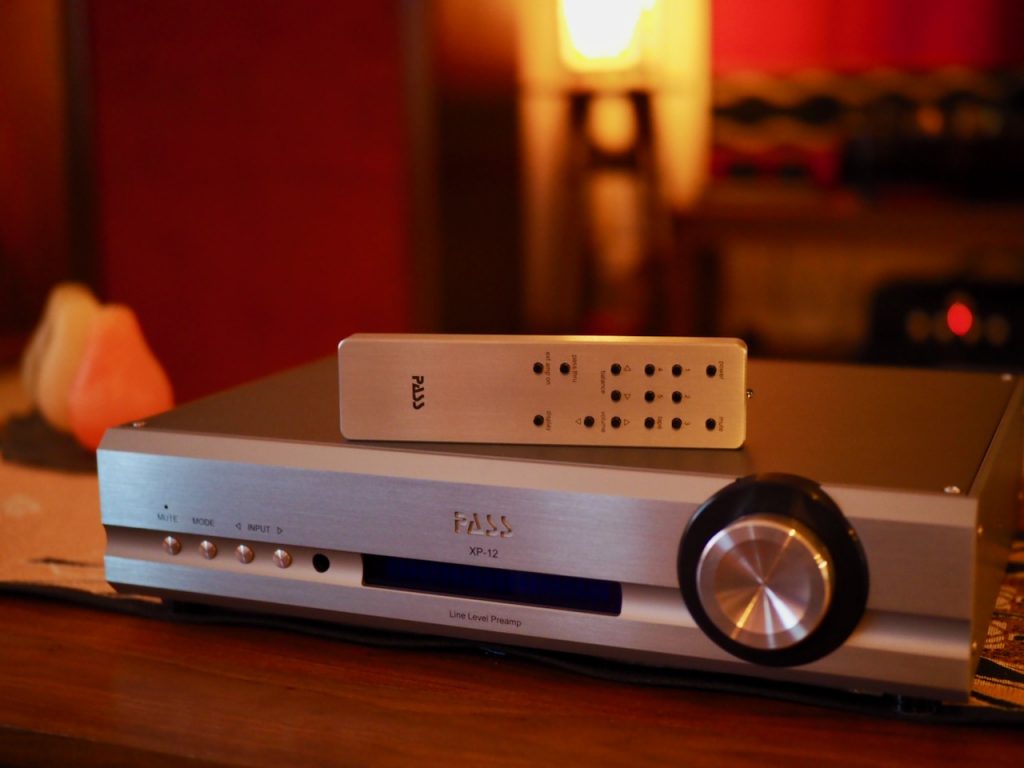
Pass Labs XP-12 preamplifier.
I do that so that a component can perform at its best for its upcoming feature review at Positive Feedback.
I've also learned a couple of things using that approach, one of which is it takes a lot longer for some components to run-in and perform at their best than the conventional audio rule of thumb of 50 to 100 hours.
While the 50 to 100 hour rule of thumb is true for some components, for others it can take 300 to 400 hours, or even longer, before they truly arrive at their full performance level.
Here at Jeff's Place I like to provide you with little glimpses into the run-in process for a component so you as a potential customer have an idea of what to expect as a component runs-in over time in your own system, which I think is good for you to know.
I usually start with a "cold out of the box" first listen, then periodically offer observations on a component's performance over time until it has hit its full stride and is ready for its feature review at Positive Feedback.
I really think that gives you a better idea of what it is like to live with a component, what to expect from a component, and whether or not it will be a good choice for you to consider in your own system.
I feel very fortunate that the components I get to write about for Jeff's Place and Positive Feedback are among the very best of their kind for my performance preferences (more about that HERE), and I find it to be illuminating to try them in multiple systems to get a better idea of their performance in different contexts.
So in that spirit, I wanted to follow up on my First Listen: The Pass Labs XP-12 Preamplifier with the Pass Labs XA25 Class A Stereo Amplifier! post by listening to the Pass Labs XP-12 Preamplifier with the impressive First Watt SIT-3 Stereo Amplifier (SIT-3 review HERE, XA25 review HERE).
As I've come to expect from anything touched by Nelson Pass, both the Pass Labs XA25 Class A stereo amplifier and the First Watt SIT-3 stereo amplifier are superb sounding artisanal amplifiers that in the right context can offer an amazing musical & sonic performance, not to mention they are ultra-reliable in long-term operation.
Add to that cutting-edge performance their relative - for high-performance audio - real world pricing of around $5K, and you've got a state-of-art audio product that an average bloke like me or some of you can aspire to own (ditto with the Pass Labs XP-12 line preamplifier at $5800 USD).
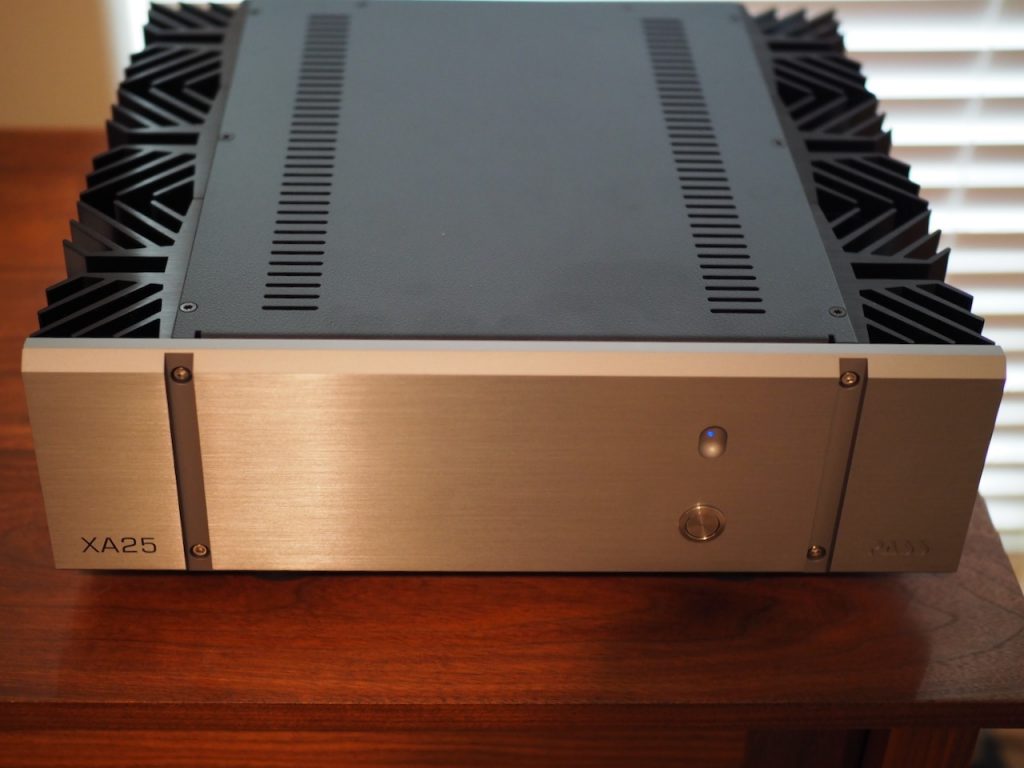
Pass Labs XA25 Class A stereo power amplifier.
I'm still accumulating run-in time on the Pass Labs XP-12 line-level preamplifier, so as with the first listen with the Pass Labs XA25 Class A stereo power amplifier, you should consider this "first listen" with the First Watt SIT-3 to be preliminary impressions.
I fully expect to hear things change a bit with more run-in time, so keep that in mind as you read what follows.
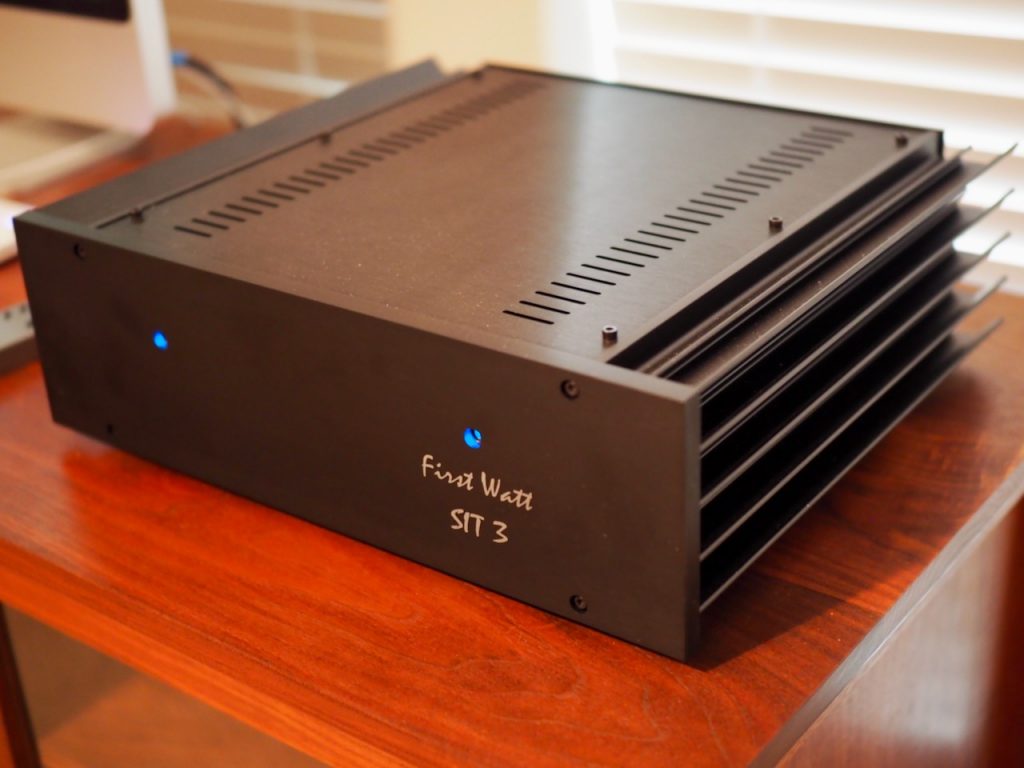
First Watt SIT-3 stereo amplifier
The First Watt SIT-3 is a rather amazing amplifier, although its usual 18 watts of stereo power into 8 Ohms is halved by my vintage Altec Corona 832A loudspeakers to 9 watts of stereo power into their 16 Ohm load - about like a 300B amplifier - which is still way more than enough power to driver the Corona's to live-like levels.

First Watt SIT-3 stereo amplifier with the Pass Labs XP-12 preamplifier.
The system context for my first listen to the Pass Labs XP-12 preamplifier with the First Watt SIT-3 was exactly the same as it was for my first listen with the Pass Labs XA25 Class A stereo power amplifier (details HERE), all I did was exchange amplifiers.
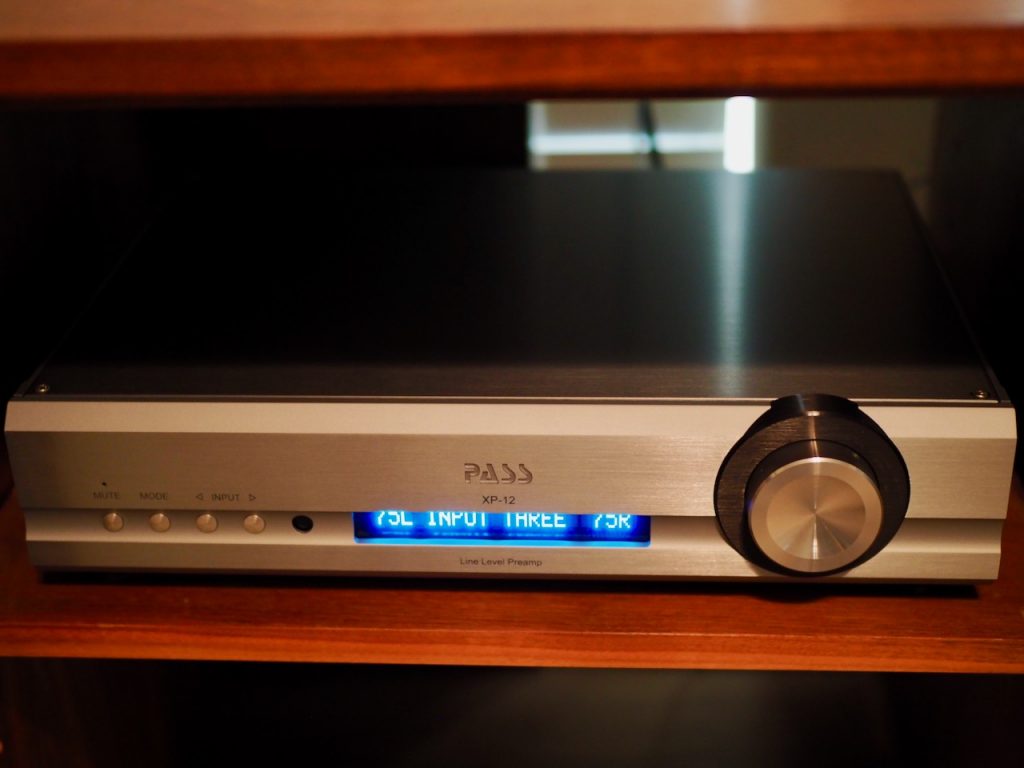
Pass Labs XP-12 line-level preamplifier
I've left the Pass Labs XP-12 line-level preamplifier powered up 24/7 during its run-in period, and when I'm listening to music with it I turn off the display (a tip from a Pass Labs dealer which he believes provides better sound quality).
A cool feature to note is that when you turn off the XP-12's display, it still illuminates briefly as you change volume levels, then turns itself back off - that's a cool design aspect that I really like.
By the way, before I tell you about what I am hearing from the $5800 USD Pass Labs XP-12 preamplifier, let me offer you some more general impressions about it.

Pass Labs XP-12 preamplifier.
First of all, the industrial design of the Pass Labs XP-12 - the function, value, and appearance - is world class.
It's obvious the people at Pass Labs are experts in industrial design, and really know how to offer a product with an excellent set of features, an attractive appearance, ultra-high quality of materials & workmanship, and a ton of performance value for its realtive "real-world" pricing of $5800 USD.
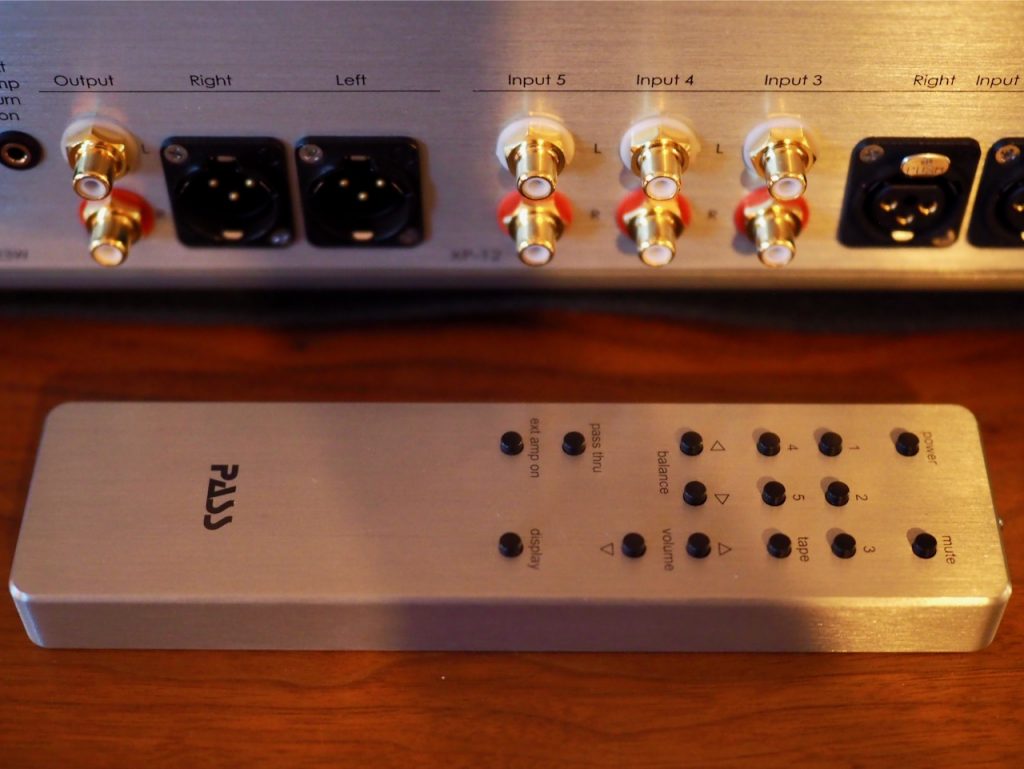
Pass Labs XP-12 preamplifier.
The quality of construction and fit & finish of the Pass Labs XP-12 is extraordinary, and matches anything at any price.
I also happen to think its very attractive, and I particularly like the appearance of the blue-light display as a nice cosmetic touch.
I also really like the remote, it is of very high-quality, and has a great selection of features. So, not only is its all-aluminum construction superb, it also has all the features you could want in a remote, with a "power on" button for both the preamplifier and an external Pass Labs amplifier (!), volume & balance controls, input selection controls, a mute button, a pass through function, and the ability to turn on & off the display.
So far I've only used the remote's volume control, input selection, and display on & off features, but I'll report back on the other features as I learn more about them and try them.

Jazz24 stream from Seattle.
As usual during the run-in process in my bedroom system, I listened to the the superb Seattle jazz station Jazz24 streamed to my vacuum tube Mhdt Paradisea USB DAC as a source.
I found the Pass Labs XP-12 line preamplifier to be a natural match to the Pass Labs XA25 Class A stereo power amplifier, but I was also curious to hear how it would perform with the Nelson's First Watt SIT-3 stereo amplifier.
I let the Pass Labs XP-12 preamplifier and First Watt SIT-3 stereo amplifier combo play together for a week or so to give everything a chance to equilibrate with each other.
The Pass Labs XP-12 line preamplifier sounded very different combined with the First Watt SIT-3 than it did combined with the Pass Labs XA25.
Or perhaps another way to say that is that the Pass Labs XP-12 line preamplifier really lets the distinct performance characteristics of each of those amplifiers shine through very clearly, and doesn't seem to impart a distinctive sound of its own on them. It's very transparent in that regard.

Pass Labs XA25 Class A stereo power amplifier.
As I mentioned with in my "first listen" with the Pass Labs XP-12 preamplifier combined with the XA25 Class A stereo power amplifier, the overall performance of this Pass pre-power combination sounded smooth, natural, nuanced, with beautifully balanced overall tone, gorgeous tone color, musicality that captured the essence of beat, melodies, dynamics, tempo, and timbre, as well as having impressive visuospatial performance (e.g. imaging, resolution, soundstage, soundspace, etc.).
I was impressed with the naturalness, overall musicality and visuospatial performance of the Pass Labs XP-12 pre and XP25 power amp combination, and it really brought out the best from my vintage Altec 832A Corona loudspeakers.

First Watt SIT-3 stereo amplifier
The SIT-3 amp and XP-12 pre combo sounded very different on my vintage Altec 832A loudspeakers than did the XA25 amp and XP-12 pre combo.
From an overall tonal perspective, the SIT-3 amp and XP-12 pre combo had more emphasis on the mid-range on up, giving a leaner and more "neutral" balance than did the XA25 amp and XP-12 pre combo.
The Altec 803A low-frequency drivers in my Coronas are known for their superb articulation in the low-frequencies, but they don't go as low in Hz as do the Altec 803B low-frequency drivers in my "Stokowski" Altec's, or the 515B low-frequency drivers in my Altec A5 Voice of the Theatre's, and certainly not as low as my Tannoy Westminster Royal SE loudspeakers, which can rattle your ribcage with their low-frequency prowess.
The Pass Labs XA25 amp is notable for its astonishing low-frequency performance, and as a result it gives the impression of more warmth in the low-frequencies of the 803A low-frequency drivers in my Coronas than does the SIT-3.
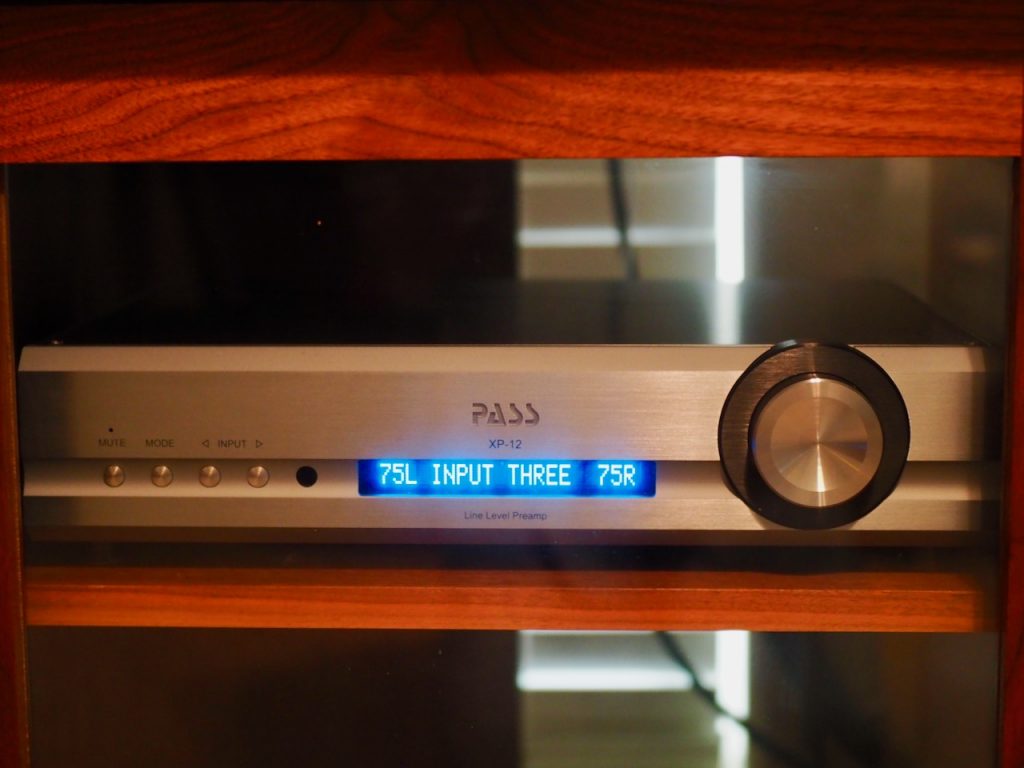
Pass Labs XP-12 line-level preamplifier.
That isn't to say that the XP-12 pre & SIT-3 power combo sounds bright or forward at all, it still sounds smooth and natural with the Coronas, but the XA25's extra oomph in the low-frequencies adds more of a sensation of warmth to the low-frequencies of the Coronas, thus giving a warmer overall presentation.
I don't think I've ever heard an amplifier resolve as much musical & sonic nuance in such a natural fashion as the SIT-3, and the Pass Labs XP-12 pre really allows the SIT-3 to show its prowess in that regard.
Musically speaking, the First Watt SIT-3 with the Pass Labs XP-12 line preamplifier provided a very satisfying portrayal of natural sounding timbral textures, with excellent resolution of tone color, as well as an articulate, nuanced, and vivid portrayal of melodies and harmonies.
From the lowest lows to the highest highs that my Corona loudspeakers could produce, the XP-12 pre and SIT-3 amp combo provided a level of resolution, timbral nuance, and musical articulation that was truly wondrous.
The Pass Labs XP-12 line preamplifier also easily demonstrates the First Watt SIT-3's impressive performance in terms of resolution, imaging, soundstaging, and in recovering the acoustic space of the recording venue, as well as the "acoustic envelope" around individual instruments.
I haven't been able to pin down the overall tonal & sonic signature of the Pass Labs XP-12 line preamplifier yet.
It strikes me as being very neutral and transparent, imparting little of its own signature upon the sound, while letting me hear very clearly the performance characteristics of the power amplifier it is partnered with.
Next up for listening impressions with the Pass Labs XP-12 line preamplifier will be my Leben CS600 vacuum tube integrated amplifier with the Coronas, which I'll use in its "power amp" mode.
I'm really familiar with my Leben CS600, I've been listening to it for a little more than a decade, so it should help me get more insights into the XP-12 pre's musical & sonic performance.
The path forward after that will be to listen to the Pass Labs XP-12 line preamplifier with the "Stokowski" Altec's, and then the Tannoy Westminster Royal SE's to round out my listening impressions.
What do I think so far about the Pass Labs XP-12 line preamplifier?
It's a match made in heaven for the Pass Labs XA25 Class A stereo power amplifier.
With the Coronas, the XP-12 pre is also a nicely complementary match with the SIT-3 power amplifier, but I suspect where I'll really be able to hear what the XP-12 pre and SIT-3 power combo can do will be with my "Stokowski" Altec's and Tannoy Westminster's, that have a little more low-frequency prowess.
Stay tuned, I'll have much more to say about the Pass Labs XP-12 line preamplifier as I get it fully run-in, and try it in a variety of different system contexts.
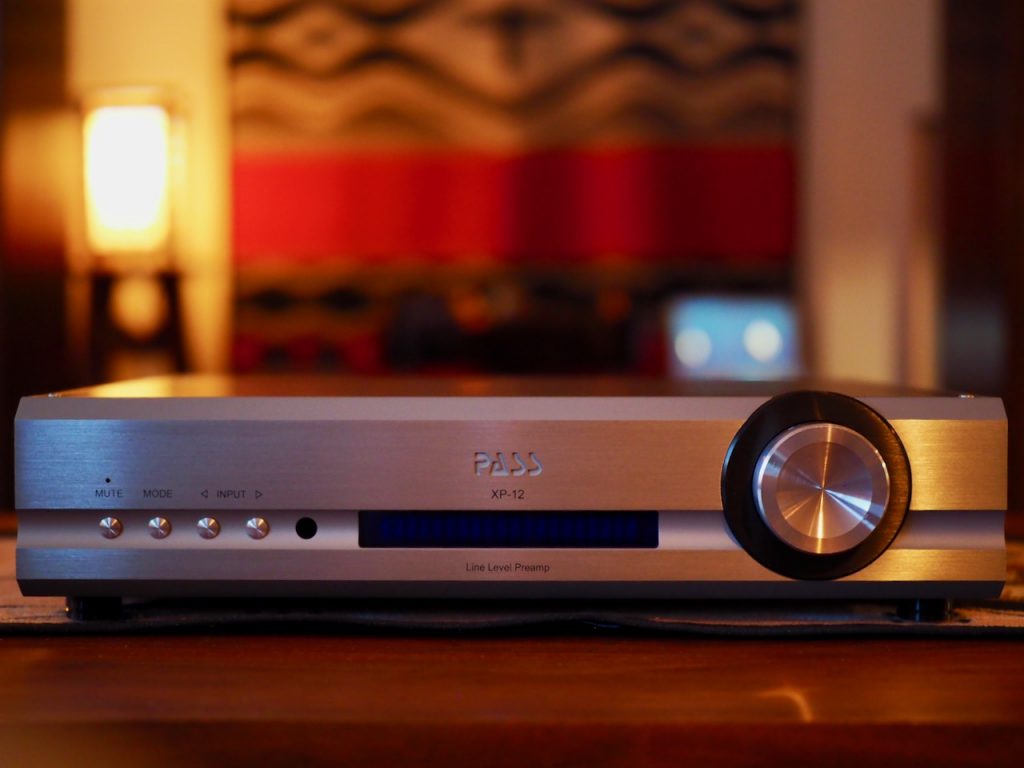
Pass Labs XP-12 preamplifier.
For now, suffice it to say that I am very impressed with the performance of the Pass Labs XP-12 line preamplifier.
As always, thanks for stopping by, and may the tone be with you!



























